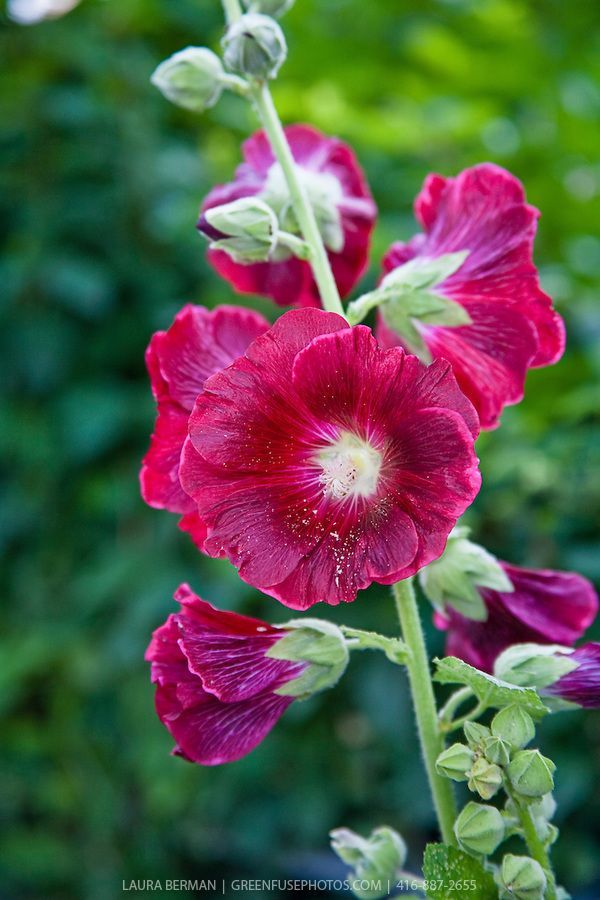hollyhocks are beloved for their tall spires of colorful blooms and their ability to bring charm and height to flower beds and borders. Here are some key features and tips about hollyhocks:










Features of Hollyhocks:
- Tall Flower Spikes: Hollyhocks (Alcea) are known for their tall, erect stems that can reach heights of 5 to 8 feet (1.5 to 2.5 meters). These stems bear clusters of large, saucer-shaped flowers along their length.
- Color Variety: They come in a range of colors, including shades of pink, red, white, yellow, and even bi-colors. Their vibrant blooms attract pollinators like bees and butterflies.
- Biennial or Perennial: Hollyhocks are often considered biennial but can act as short-lived perennials, especially in optimal conditions. They usually produce foliage in the first year and flowers in the second year before setting seeds and potentially reseeding themselves.
- Foliage and Growth Habit: Their lower leaves are rounded and palmate, with a rough texture. Hollyhocks have a bushy base and a single, tall flowering spike, giving them a distinctive and statuesque appearance.
Growing Hollyhocks:
- Sunlight: Plant them in full sun for best blooming results. They thrive in well-drained soil with good air circulation.
- Planting Time: Sow seeds or transplant young plants in early spring or late summer/early fall. They prefer cooler temperatures for establishment.
- Spacing: Allow enough space between plants (about 18 to 24 inches) to accommodate their eventual size.
- Support: Due to their height, hollyhocks may require staking or support to prevent them from toppling over in windy conditions.
- Watering: Provide regular watering, especially during dry periods, to encourage healthy growth and blooming.
Use in Gardens:
- Borders and Backdrops: Hollyhocks work well as back-of-border plants or against fences and walls, adding vertical interest and a cottage garden feel.
- Cottage and Informal Gardens: Their old-fashioned charm makes them a favorite for cottage-style gardens and informal landscapes.
- Attracting Wildlife: Besides their beauty, hollyhocks attract bees, butterflies, and hummingbirds, contributing to a vibrant and lively garden ecosystem.
Hollyhocks are treasured for their nostalgic appeal and their ability to add height, color, and whimsy to gardens, making them a popular choice among gardeners seeking a touch of traditional elegance.